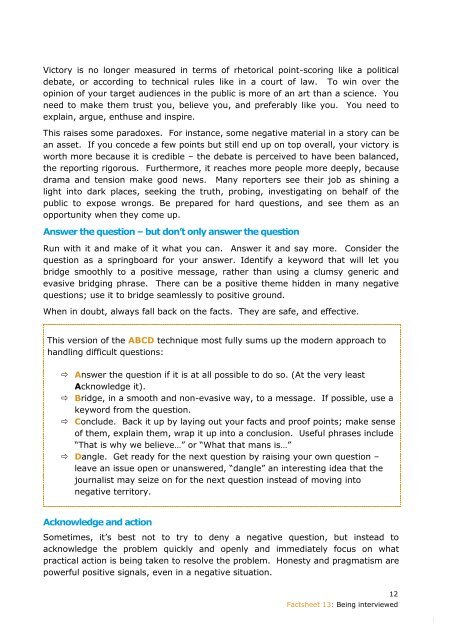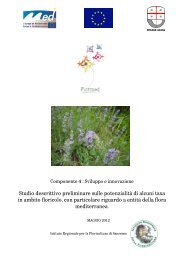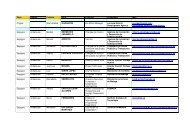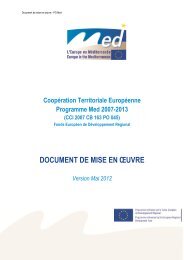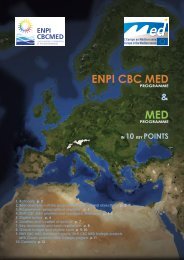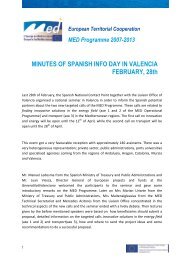MED Communication Handbook - Programme Med
MED Communication Handbook - Programme Med
MED Communication Handbook - Programme Med
You also want an ePaper? Increase the reach of your titles
YUMPU automatically turns print PDFs into web optimized ePapers that Google loves.
Victory is no longer measured in terms of rhetorical point-scoring like a political<br />
debate, or according to technical rules like in a court of law. To win over the<br />
opinion of your target audiences in the public is more of an art than a science. You<br />
need to make them trust you, believe you, and preferably like you. You need to<br />
explain, argue, enthuse and inspire.<br />
This raises some paradoxes. For instance, some negative material in a story can be<br />
an asset. If you concede a few points but still end up on top overall, your victory is<br />
worth more because it is credible – the debate is perceived to have been balanced,<br />
the reporting rigorous. Furthermore, it reaches more people more deeply, because<br />
drama and tension make good news. Many reporters see their job as shining a<br />
light into dark places, seeking the truth, probing, investigating on behalf of the<br />
public to expose wrongs. Be prepared for hard questions, and see them as an<br />
opportunity when they come up.<br />
Answer the question – but don’t only answer the question<br />
Run with it and make of it what you can. Answer it and say more. Consider the<br />
question as a springboard for your answer. Identify a keyword that will let you<br />
bridge smoothly to a positive message, rather than using a clumsy generic and<br />
evasive bridging phrase. There can be a positive theme hidden in many negative<br />
questions; use it to bridge seamlessly to positive ground.<br />
When in doubt, always fall back on the facts. They are safe, and effective.<br />
This version of the ABCD technique most fully sums up the modern approach to<br />
handling difficult questions:<br />
� Answer the question if it is at all possible to do so. (At the very least<br />
Acknowledge it).<br />
� Bridge, in a smooth and non-evasive way, to a message. If possible, use a<br />
keyword from the question.<br />
� Conclude. Back it up by laying out your facts and proof points; make sense<br />
of them, explain them, wrap it up into a conclusion. Useful phrases include<br />
“That is why we believe…” or “What that mans is…”<br />
� Dangle. Get ready for the next question by raising your own question –<br />
leave an issue open or unanswered, “dangle” an interesting idea that the<br />
journalist may seize on for the next question instead of moving into<br />
negative territory.<br />
Acknowledge and action<br />
Sometimes, it’s best not to try to deny a negative question, but instead to<br />
acknowledge the problem quickly and openly and immediately focus on what<br />
practical action is being taken to resolve the problem. Honesty and pragmatism are<br />
powerful positive signals, even in a negative situation.<br />
12<br />
Factsheet 13: Being interviewed<br />
�


